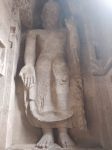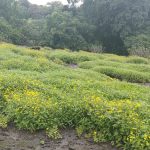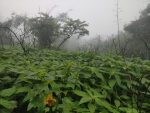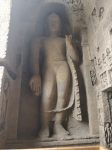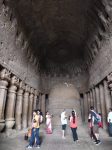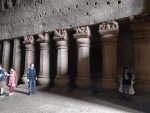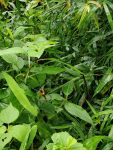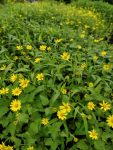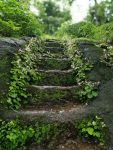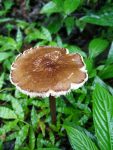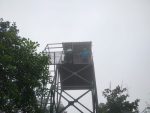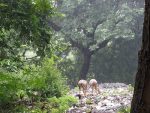A GREEN PARADISE AMIDST THE CONCRETE JUNGLE.
Believe it or not, there isn’t any other metropolitan city in the world which boasts of a green cover as huge as SGNP within its’ municipal boundaries.
If you want to have a quick and cheap getaway from the chaotic city, the Sanjay Gandhi National Park (SGNP) (aka Borivali National Park) is the place to go! It is not only a visual treat for wildlife photographers and trekkers but also suitable for fitness enthusiasts and children! The toy train, rented cycles available for cycling and the well laid out road makes the park suitable for all age groups.
Here’s everything you need to know about the SGNP (click on the section to see further details) :
The Park is a 104 sq. km protected forest area in Mumbai and consists of various nature trails and treks with gorgeous sights of wildlife, valleys, streams, lakes, flora and fauna. It is home to a varied species of vegetation, birds, mammals, butterflies, insects and amphibians.
SGNP is known as the lung of the Metropolitan city, purifying much of the air pollution of Mumbai. A breath of fresh air from the concrete jungle, the park covers most of the western and northern borders of the city and is wedged between Borivali and Thane. The SGNP extends to areas such as the IIT Powai campus ,Aarey Colony, Ghodbunder village in Thane and the Nagla block. The two largest lakes of Mumbai -Tulsi and Vihar; which are the source of water to most of the South Mumbai residents are located in this national park.
The 2000 yrs old Kanheri Caves are a prime attraction and are located at a distance of 6kms from the SGNP main entrance at Borivali.
The Gandhi Tekdi, a memorial dedicated to Mahatma Gandhi is also popular.
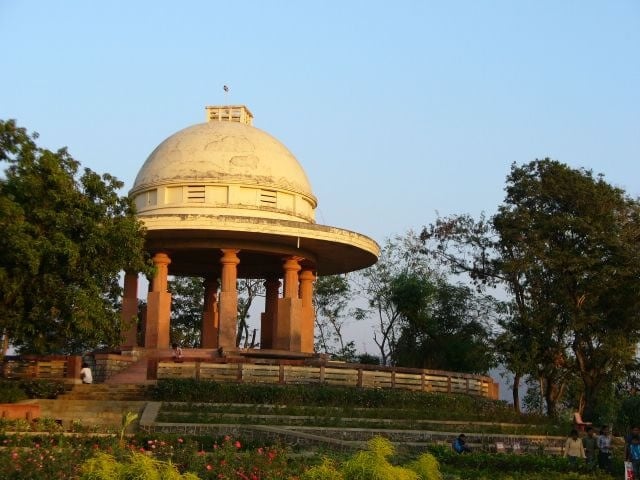 * Gandhi Tekdi (1.5 kms from the SGNP Gate at Borivali.)
* Gandhi Tekdi (1.5 kms from the SGNP Gate at Borivali.)
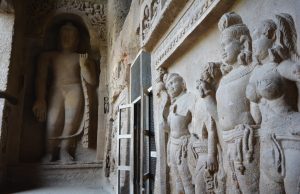
* The Ancient Sculptures inside Kanheri Caves.
- The park is easily accessible and well connected by road and railway networks. The main entrance gate to the SGNP is at Borivali East (on the Western Express Highway), which is approximately 40 kms to the north of South Mumbai. The closest railway station is Borivali Station on the Western line. The Park remains closed on Mondays while there are public buses plying from Mumbai to the National Park on Sundays and public holidays.
- While the 5.5 sq.km Krishnagiri Upvan area serves as a public recreation zone within the park, the core areas have restricted access i.e they require permits/ trail passes from the Forest Department.
- The gates open at 7:30 am and close at 5:30 pm. From the SGNP entrance, you can take your own private vehicle up to the Kanheri Caves, from where most trails start. Alternatively, BEST Bus. No 188 operates inside the park which takes you till the caves. (ONLY ON SUNDAYS) Early trekkers will need a private vehicle, as the bus services are not available in the early morning hours. There is also an option to rent a seat in one of the many Omni shuttles which take you to the destination. A one way transfer costs you approx 50-60 Rs per person. The caves can be visited between 9 am to 12.30 pm and 2 pm to 5.30 pm.
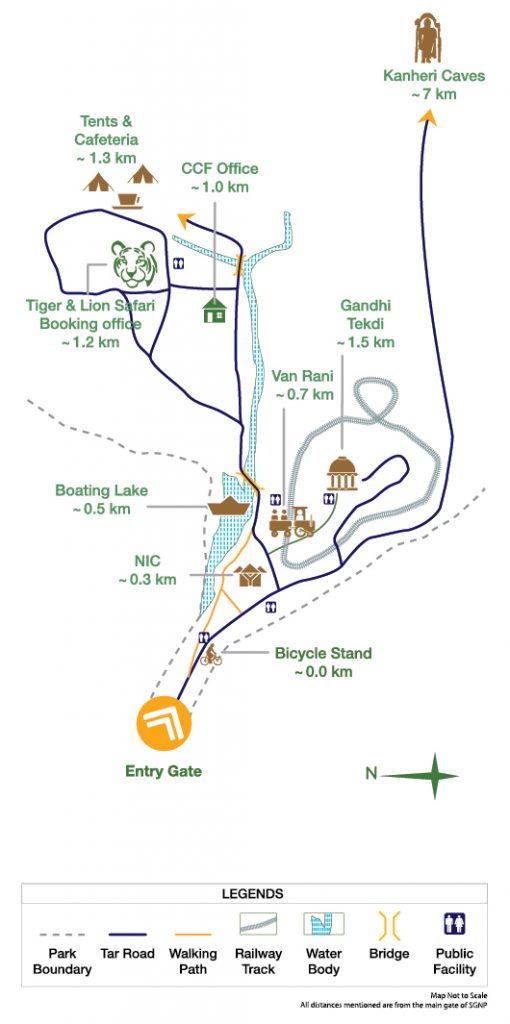
* An internal road map of the Borivali National Park.
The SGNP is rich in biodiversity and thus every season has it’s own charm, bringing in a variety of experiences.
SUMMER :
( GO FOR : Spotting wild animal species and various flora & fauna.)
The months from April to May are suitable for spotting wild animals such as spotted deers, Indian flying fox, Indian hare, porcupines and crocodiles. That being said, the climate does get quite hot and may not be as pleasant for trekking. But early morning trails will nonetheless be beautiful as the silk cotton and gulmohar burst into crimson hues, spreading a flame-of-the forest vibe.
MONSOON :
( GO FOR : The lush greenery spread around and gorging waterfalls.)
As the jungle basks in the glory of the monsoon showers, a thick green blanket seems to spread across the hills and make a gorgeous landscape. The beautiful surroundings might entice you to spend a long time at leisure.
July to September are the best time to go for treks at the SGNP – it’s wet and slippery but the park does come alive
WINTER :
( GO FOR : Chilly Morning treks and Bird-watching.)
The months from November to February are ideal for birdwatchers.
The climate is also quite suitable for treks and exploring the forest. Raptors and bird species such as the Shikra (Accipiter badius), ubiquitous Black Kites (Milvus migrans), Crested Honey Buzzard (Pernis ptilorhyncus) and the Crested Serpent Eagles (Spilornis cheela) can be spotted.
There are 5 major trails which can be explored with the guidance of naturalists, guides and tour agencies. The liveliness of the forest and wildlife can be experienced through these trails. All the trails require special permits from the Forest Department as they form a part of the core areas. The lesser known Nagla block trail near Thane is a favorite amongst the wildlife enthusiasts. (Details in the article. The BNHS ( Bombay Natural History Society), World Wide Fund for Nature and SGNP itself, conducts regular nature trails through the forest area. We advise you to read the safety tips in this article to have a safe and enjoyable nature trail.
1) SHILONDA TRAIL
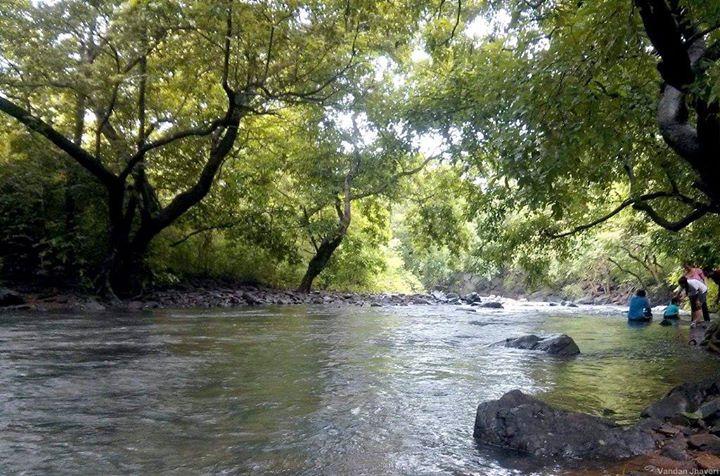
a) Start and End points : Located at a distance of 3 kms from the Borivali National Park gate. It runs along the Northern end of the SGNP.
b) Distance to be covered : Approx 1.5-2 kms.
c) Time required : 30-45 minutes.
d) Difficulty level : Easy.
e) Suitable for : Beginners, Old age groups as well as for experienced Wildlife Explorers.
f) Time to visit : MONSOONS, WINTER.
In the monsoons there is a stark rise in the spotting of various wild species; as they are granted respite from the summer heat. One can walk through the rippling streams or relax by the rocks while dipping their feet into the crystal clear water. Bird watching is an enjoyable wildlife activity during the winter season.
2) MALAD TRAIL

a) Start and End points : Located at a distance of approx 4-5 from the SGNP gate at Borivali, this trail runs along the western edge of the national park.
b) Distance to be covered : Approx 5 kms.
c) Time required : 30-45 minutes.
d) Difficulty level : Easy.
e)Suitable for : Beginners and experienced Wildlife trekkers.
f) Time to visit : MONSOONS, WINTER.
The start of the trail is marked by the deciduous forest which later gives way to evergreen vegetation. The months of October to April are most suitable for seeing various bird species while butterflies can be spotted from August to November. There is an artificial water hole on the way where one can encounter some wildlife activity. The trail further leads to the suburb of Malad where crowded urban settlements have cropped up.
3) KANHERI CAVES ( Lower)
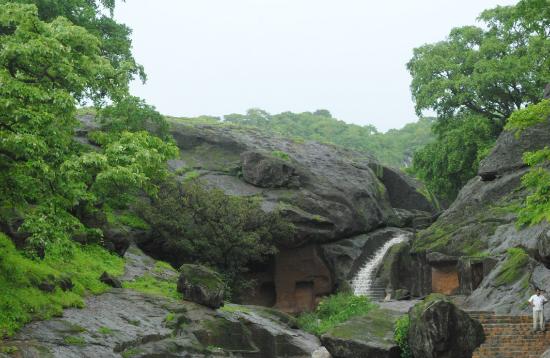
a) Start and End points : Trail starts from near the entry point of SGNP itself and ends at the Kanheri Caves ( The place served as an educational centre for Buddhish Monks is approximately 2000 yrs old.)
b) Distance to be covered : Approx 5-6 kms.
c) Time required : 45 minutes-1 hour.
d) Difficulty level : Easy.
e) Suitable for : Beginners.
f) Time to visit : Throughout the Year.
This is a gradual climb through the jungle of the Sanjay Gandhi National Park (SGNP). It is the perfect time to see birds like Shikra, Grey Junglefowl, Eagles, butterflies and wild flowers. The trail leads through various kinds of vegetation. The Kanheri caves is excellent for viewing various bird species and spectacular views of the National Park on a clear day. The caves and structures are carved out of volcanic rocks and possess unique views of the biodiversity around the area.
4) Gaimukh trail ( Upper Kanheri trail / Highest Peak trail)
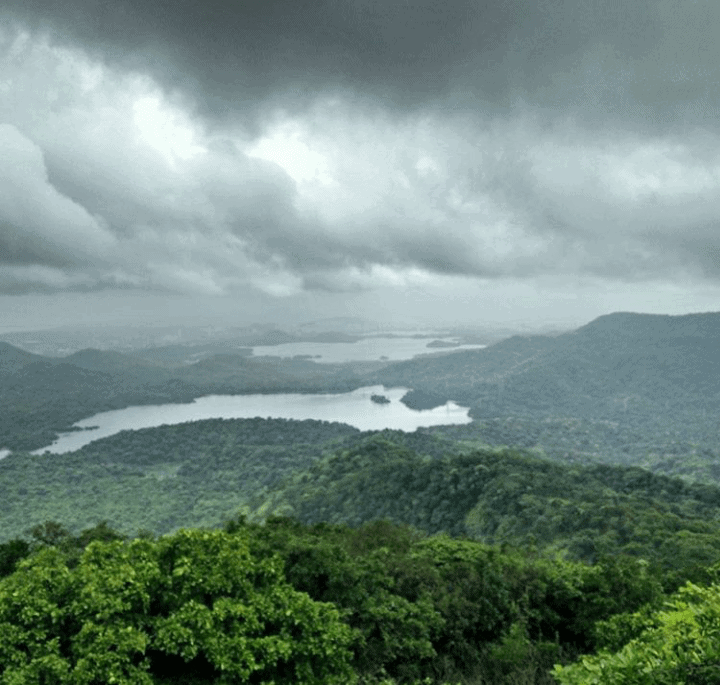
a) Start and End points : Trail starts from near the entry point of Kanheri Caves and ends at Jambulmal point. ( The highest peak in Mumbai and is approx.1600 ft above sea level.)
b) Distance to be covered : Approx 5 kms.
c) Time required : 3-4 hours.
d) Difficulty level : Medium
e) Suitable for : Basic Fitness level required.
f) Time to visit : Monsoon and Winters.
The trek starts at the foothills of the Kanheri caves. The terrain can get steep with rock patches and slippery routes during the monsoon, and hence may not be suitable for beginners. Although a bit challenging, it is one of the most rewarding and fulfilling trails of SGNP. The trail itself is beautiful, through thick forests where a variety of birds, plants, butterflies and even spiders, crabs can be spotted. The naturalist guiding your trek can help you spot these unique sights along the trail. The view from the highest point in Mumbai at the end of the trek (Jambulbal) and the waterfalls make this a unique trail, well worth the exertion. There is also a watchtower which can be used to look at the stunning view of the city and the lakes in the forest. You will also pass through a plateau ¾ distance along the trail, where a startling view of the city beyond the park can be seen. It is worthwhile to spend some time here.
5) THE NAGLA BLOCK TRAIL.
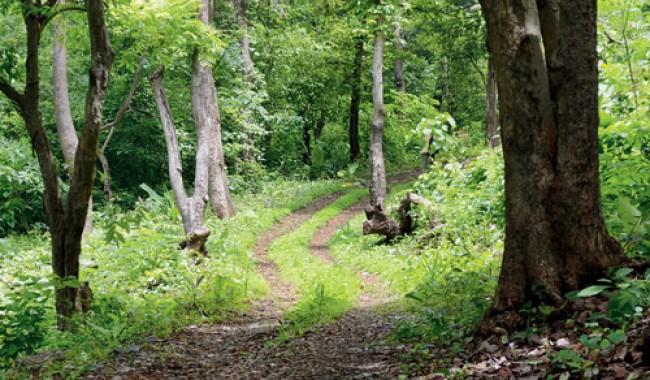
a) Start and End points : Located near the Fountain Hotel on Ghodbunder Road, Thane. Accessible from Thane Station on the Central line and from Bhayandar on the Western Line.
b) Distance to be covered : 3 kms
c) Time required : 2-2.5 hours.
d) Difficulty level : Easy.
e) Suitable for : Beginners and All Age Groups.
f) Time to visit : Throughout the year.
You have to purchase tickets at the entrance, prices for which range from 30-50 rupees. This relatively unknown opening has an off-road path which is great for trekking and cycling. and quite easy to complete. You get a peek of the beautiful and vast Vasai lake after the journey through the lush green path which has an abundance of birds, shrubbery and other vegetation. You have to contact the NIC to obtain permission for this trail. ( Tel no : 022-28847800)
There are various paths which lead into the forest but are lesser known due to the dearth of information available to the public. So in case, you find travelling till Borivali inconvenient, you can choose the closest entry points of SGNP near you. The National Park is accessible from Goregaon (BNHS, Filmcity) and Malad on the western side. On the eastern side, Mulund, Bhandup, Thane and some other suburbs have gateways into the forest. But their access is being more monitored and restricted due to sightings of leopards in the areas.
The lesser known areas such as Pachwad village, Yeoor and Yogi hills which are near the suburbs of Mulund and Thane are a regular picnic spot for the locals, as they sit by the waterfalls and enjoy the chilly monsoon breeze during the showers. ( The Yogi hills entrance in Mulund has shut down recently due to a recent Leopard attack in the area.) The Tikujiniwadi entrance and Yeoor at Thane don’t require a naturalist or guide, unless you are venturing deep into the forest beyond the SGNP guards gate, which is at the top of the hill. ( Both the routes coincide. You can go from the Tikujiniwadi route to Yeoor at the Upwan side.)
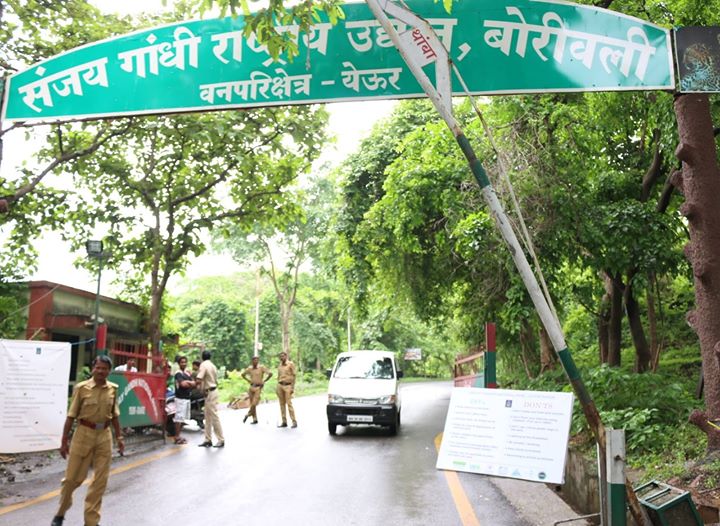
ENTRANCE TO YEOOR HILLS, THANE. ( NEAR UPVAN LAKE ROAD)
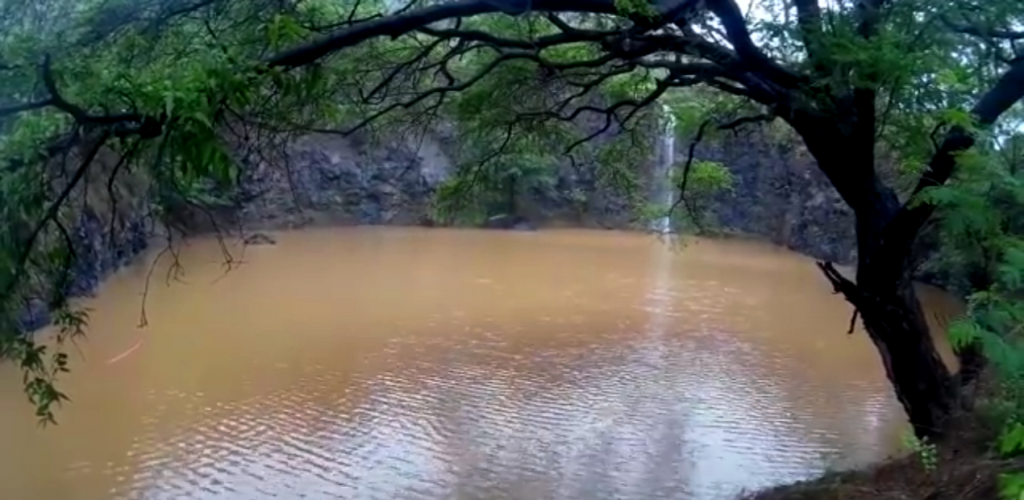
*Waterfall at the top of Yeoor Hills.
YEOOR HILLS :
The SGNP can also be explored from two routes in Thane. One is Yeoor near Upvan lake and the other is Tikujiniwadi. Yeoor Hills near Upvan lake has a large number of visitors from neighboring areas and is a regular spot for fitness enthusiasts, cyclists and walkers. You can easily reach the place using Public transport, in case you don’t have a private vehicle.
1) From Thane station, the ‘PATONAPADA BUS’ takes you straight up the Yeoor hill to the last village, via Upvan lake road.There are also “PAWAR NAGAR’ buses which can be hailed to go to Yeoor. Get down at Gandhi Nagar, and then take a rickshaw or walk upwards to the hills.There is also a Bus till Upvan lake, which is at a distance of 5-8 minutes from the hills.
2) From Mulund, Bus number 110 takes you straight on top of Yeoor.
3) There is a Tikujiniwadi Bus from Thane Station which will take you to the forest area. The SGNP entrance is located 5-8 minutes away from the Bus stop.
If you go with a travel organization or conservation NGO, the permit arrangements will typically be made by the travel organization for the group and you do not need to contact the Forest Department separately.
If you are bringing your own vehicle inside the park, you will need to purchase a parking ticket at the gate separately.
In case, you are going on your own or with your family or friend, the permit procedure is simple and just requires you to call the NIC 1-2 days in advance, ( NATURAL INFORMATION CENTRE) to make the arrangements for the day of the trail. You are assigned a naturalist to guide you through the forest area. The rates for these trails are priced reasonably and are quite affordable with the passes ranging from 100-350 Rs. The naturalist is to be paid an additional Rs 250 per hour. ( FIXED RATE)
You can contact the NIC (Natural Information Centre) through the number – 022-288-686-86 .
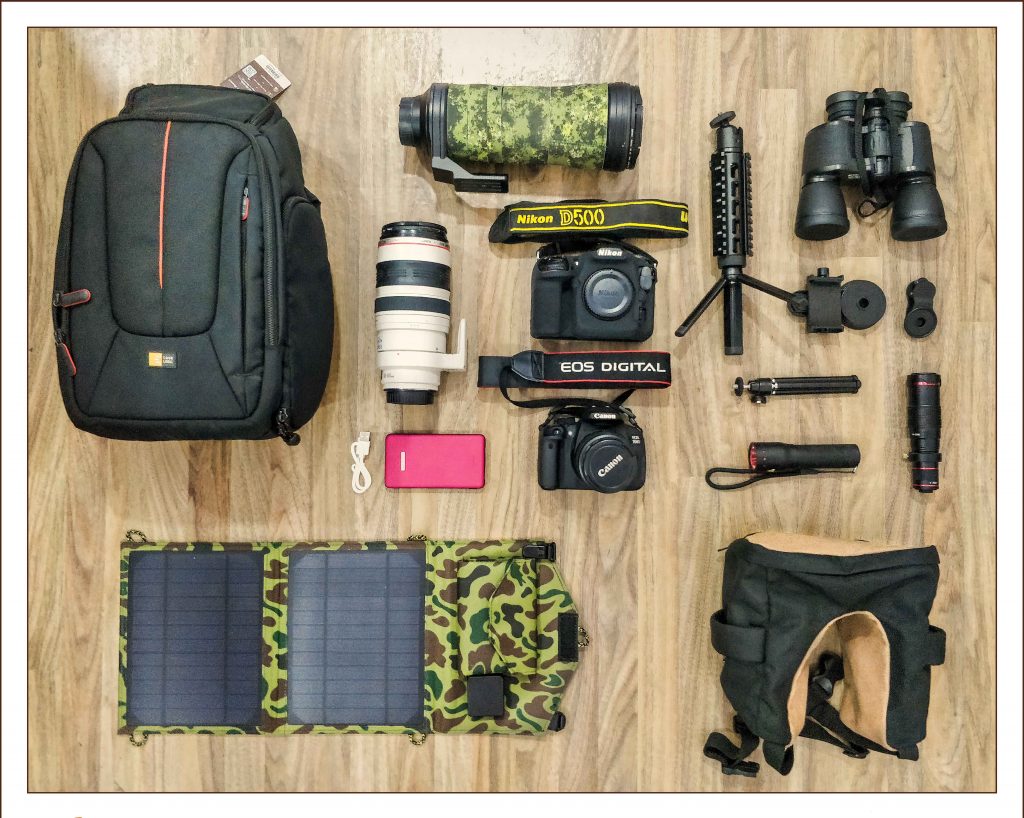
1) Wear comfortable outfits and full length trek pants to prevent mosquito bites. (Mosquitoes bites are quite an issue during the longer forest trails.)
2) Mosquito repellent.
3) Good shoes to have a proper grip while trekking on rocks or slippery patches.
4) A hat/ cap, windcheater. (During Monsoons.)
5) At least 1-2 liters of water.
6) Some packed food or snacks for the journey/ trail.
7) A bag to collect your garbage and litter.
8) A Basic First Aid Kit. (Adhesive tape, Bandages and Antibiotic ointment, etc)
9) Any ID proof such as Aadhar, Passport or PAN Card which you may require for the trail permission.
10) Photography equipment as per your preference (Recommended: 360 * Camera or a DSLR with a wide angle lens or macro lens if interested in clicking the small flora and fauna)
11) Backpack/ Daypack (less than 30 lit)
12) Trekking Pole, especially for people with weak knees.
13) Binoculars, especially if you are going all the way up the peak or the plateau
A lot of people venture into the wild alone and without guidance. There have been instances of wild creatures lurking around the areas and people getting lost in the forest. Venturing near the streams and waterfalls during the monsoons without proper guidance is also a risk.
- You are advised to contact the NIC ( Nature Information Centre) to get in touch with a naturalist or go with a group, as some trails are quite isolated and venturing into the wild alone can prove to be dangerous. Remember that the SGNP has many animals and even plants that can cause you harm, if you donot know what you are doing.
- In the monsoons especially, donot go on treks with steep slopes (especially the Gaimukh Trek) without shoes that cover your toes and provide good grip. Regular running shoes are sub optimal but manageable.
- Cover yourself as much as possible to protect from mosquitoes (seasonal issue) as also nettles, thorns etc. There are plants at the SGNP that can give you a major itch in case of direct exposure with the skin, not to speak of crabs, ants etc.
- For any trek longer than an hour, ensure that you atleast have 1 liter of water per person on you – more in summers.
- A basic first aid kit and a whistle to raise an alarm can com in handy in emergencies
- SPOTTED A LEOPARD? HERE’S WHAT TO DO :
- Always stay in a group. While in the group, flap your arms as if they are wings, make loud noises and do high jumps. Leopards usually are wary of groups and there is less likelihood of an attack. Leopards are good runners, swimmers and climbers so your only option out is by trying to scare him.
- After spotting the leopard, back down and leave the area as soon as possible. He is not up in your space, you are in his territory. Do not venture alone into the jungle or stare at the leopards. They take it up as a challenge. Pretend to ignore their sight in case of an encounter.
Have a safe and enjoyable trip to the National Park and do let us know if you have any additional queries regarding the same!
- View of the City from the Plateau i
- Kanheri Main Statue i
- Along the trail i
- Along the trail 2 i
- Crab i
- Kanheri Statue 2 i
- Kanheri Cave inside 2 i
- Kanheri Cave inside i
- Spider i
- Wild Flowers i
- Steps i
- Wild Mushroom i
- SGNP Watch Tower i
- Deers in SGNP i
Photo Credit: Manan Shah, Sumati Sahgal, Smita Jain




